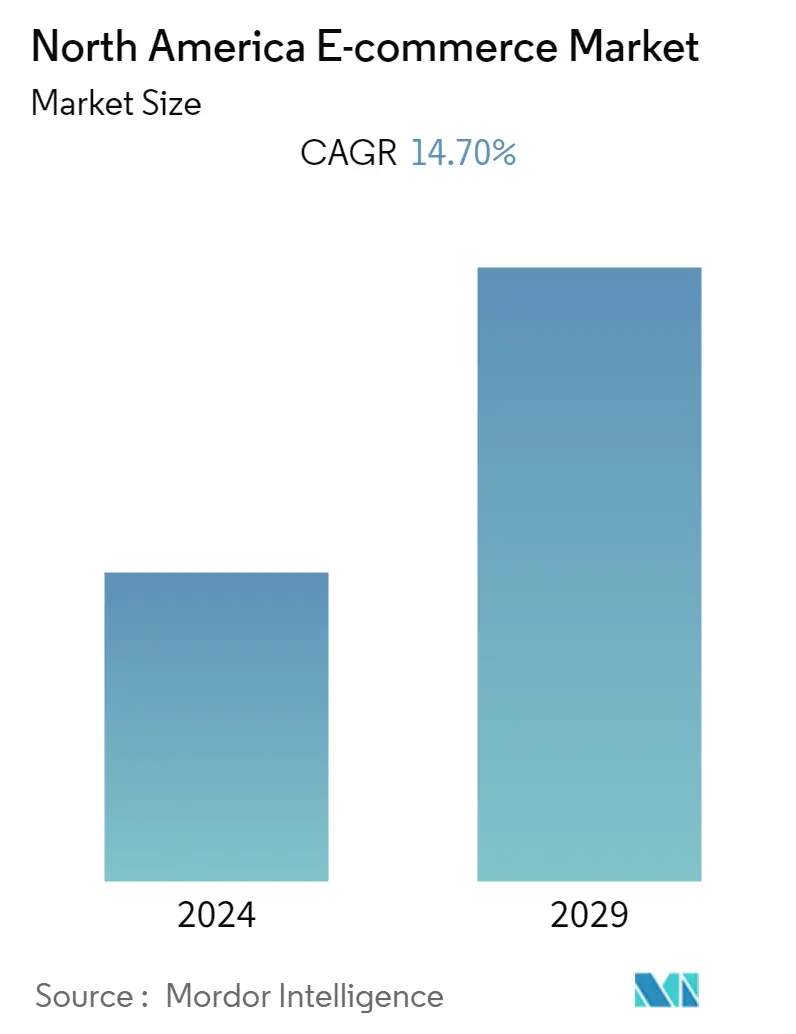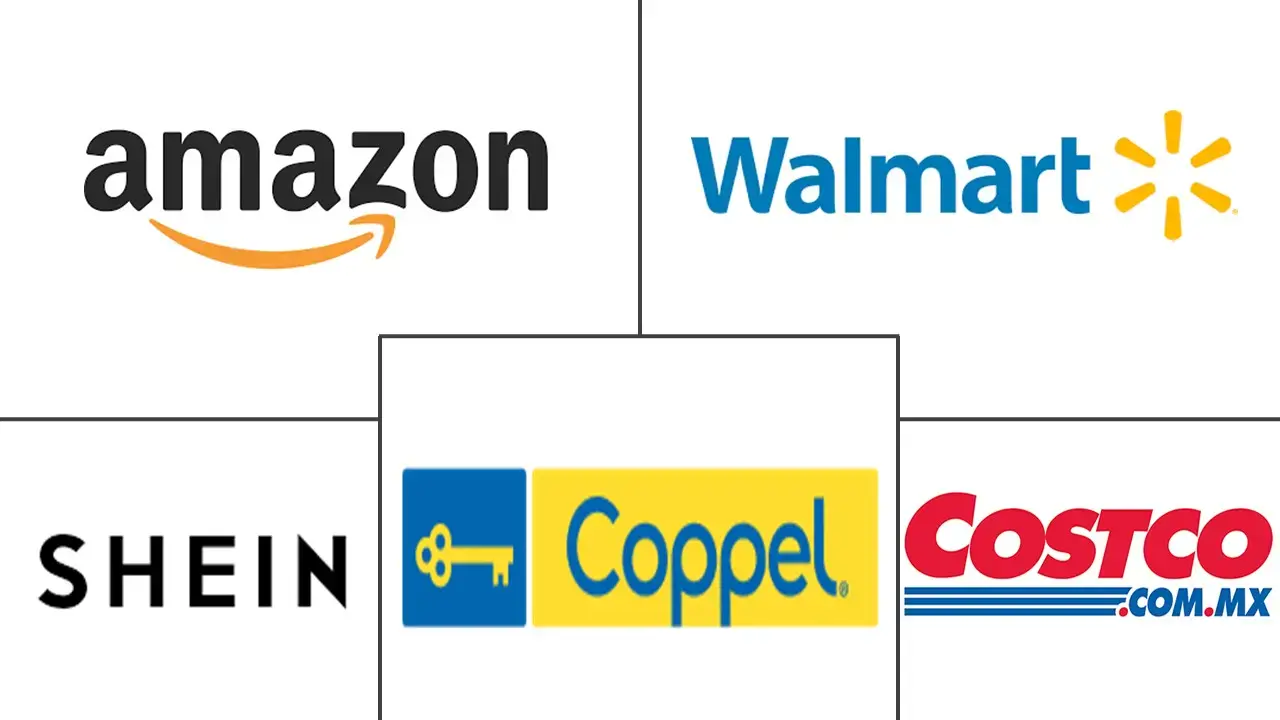Market Size of North America E-commerce Industry

| Study Period | 2019 - 2029 |
| Base Year For Estimation | 2023 |
| Forecast Data Period | 2024 - 2029 |
| Historical Data Period | 2019 - 2022 |
| CAGR | 14.70 % |
| Market Concentration | High |
Major Players
*Disclaimer: Major Players sorted in no particular order |
Need a report that reflects how COVID-19 has impacted this market and its growth?
North America E-Commerce Market Analysis
The current trend of purchasing online is growing because of its convenient access for customers compared to brick & mortar shops. The usage of the internet and smartphones are also helping the market to grow. North America is a developed and technologically advanced region, creating a huge opportunity for the E-Commerce market in the region. The North American E-commerce market is expanding at a CAGR of 12.5 % between 2022 and 2027.
- E-commerce companies have customized mobile applications to showcase their products with all the required specifications, making customers place orders easily. The increased use of smartphones and the implementation of the 5G network for connectivity make the process flexible and flawless. The region has educated and digitally driven audiences. Due to the prominence of social media applications, marketing possibilities are abundant nowadays, which aids in propelling the e-commerce market toward growth trajectories in the region. A lot of mergers and acquisitions are on the trend among the regional companies to increase their capability in the E-commerce business. For example, Descartes, a Canada-based software-as-a-service solutions provider, announced the purchase of XPS Technologies, an e-commerce shipping solutions company, for USD 65 million.
- Due to less communication and infrastructure costs, established organizations and large corporations are strategizing their operation toward online business. The E-commerce channel allows the organization to reach out to more clients, resulting in essential exposure to the firm. The increasing importance of online marketing tools such as Google advertisements and Facebook ads is also driving e-commerce. For example, Walmart has 4,700 locations across the United States, and 90% of people in the country live within 10 miles of a Walmart shop. The company is now planning its massive store network to expand its e-commerce operation because of its potential. This shows the growth of the E-Commerce market in North America.
- E-Commerce platforms create an ample opportunity for relatively small-scale and emerging companies to sell their products. Some niche product company has developed their vertical E-commerce website to reach their clients in the region. The American Baker Association has estimated the potential for expansion of e-commerce for bakers. For example, Bimbo Bakeries USA (BBU), a subsidiary of Grupo Bimbo SAB de CV, a Mexican baking conglomerate, has created a direct-to-consumer platform to deliver BBU brands to consumer's doorsteps.
- With the increased usage of connected networks, the e-commerce business is growing. Still, it creates security and privacy, breaching malicious threats to the users and companies. Security risks include hacking, data exploitation, financial theft, phishing attacks, unsecured service delivery, and credit card fraud. This is limiting the market growth because users are reluctant to subscribe to the network of comparatively newer e-commerce sites because of the threats of security breaches. A huge e-commerce hack is affecting over 500 stores using the Magento 1 platform. All the sites targeted were still running on the 12-year-old Magento 1 e-commerce platform, which Adobe will no longer support on June 30, 2020. Adobe has asked users to migrate to the latest platform, but approximately 95,000 e-commerce sites still use the older version.
- During COVID-19, many people went online to acquire necessities, propelling e-commerce sales to unprecedented heights. Before COVID-19, e-commerce was rapidly expanding. However, the pandemic drove the market even more by encouraging them to spend more money and do so more frequently. Thus, this sector is one of the few that have experienced a positive impact of the pandemic on growth.
